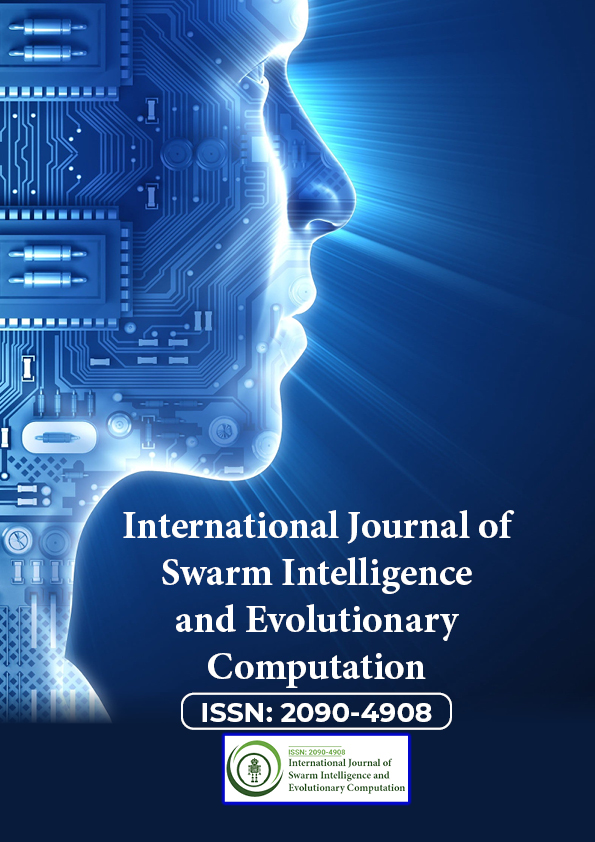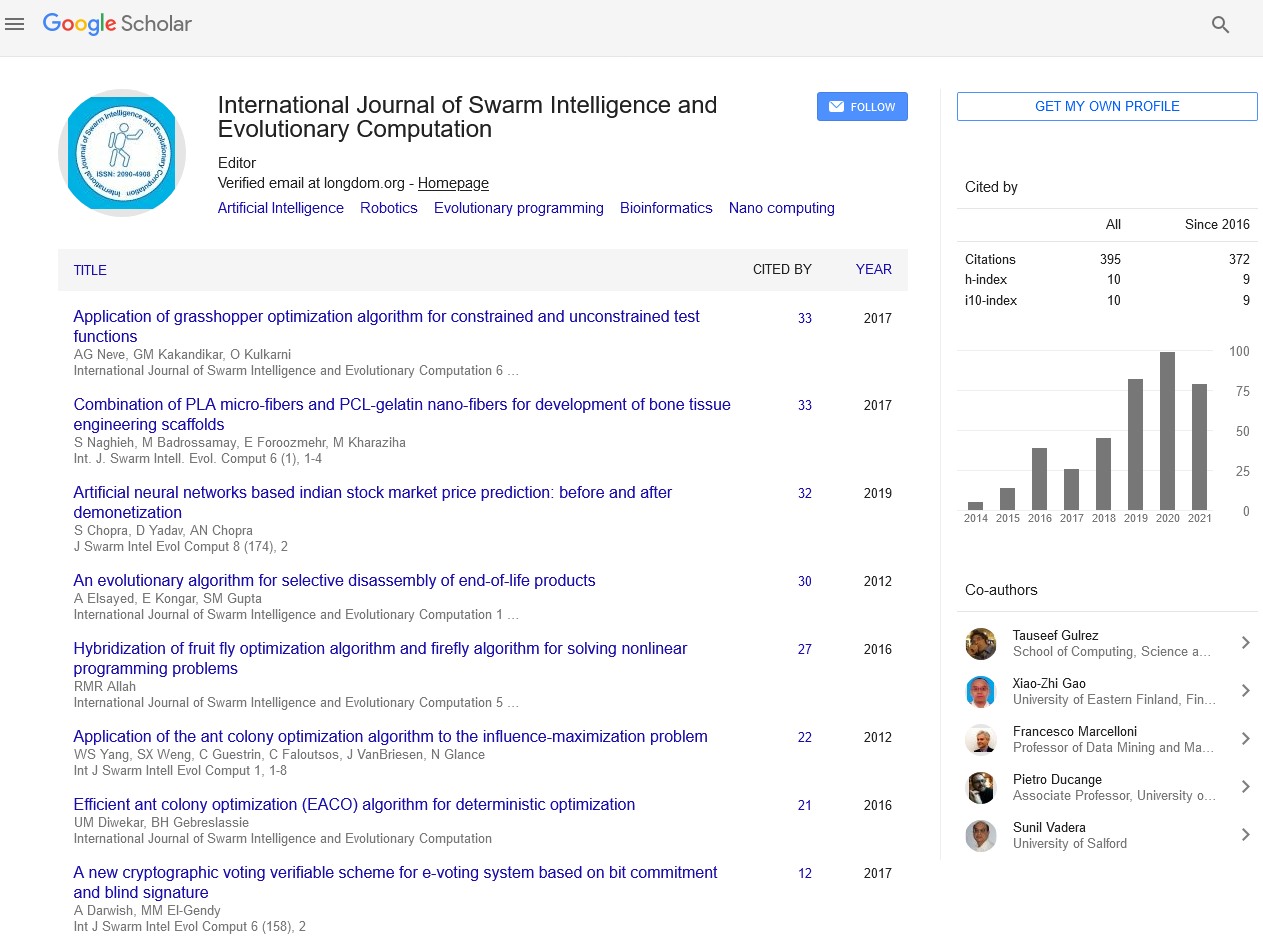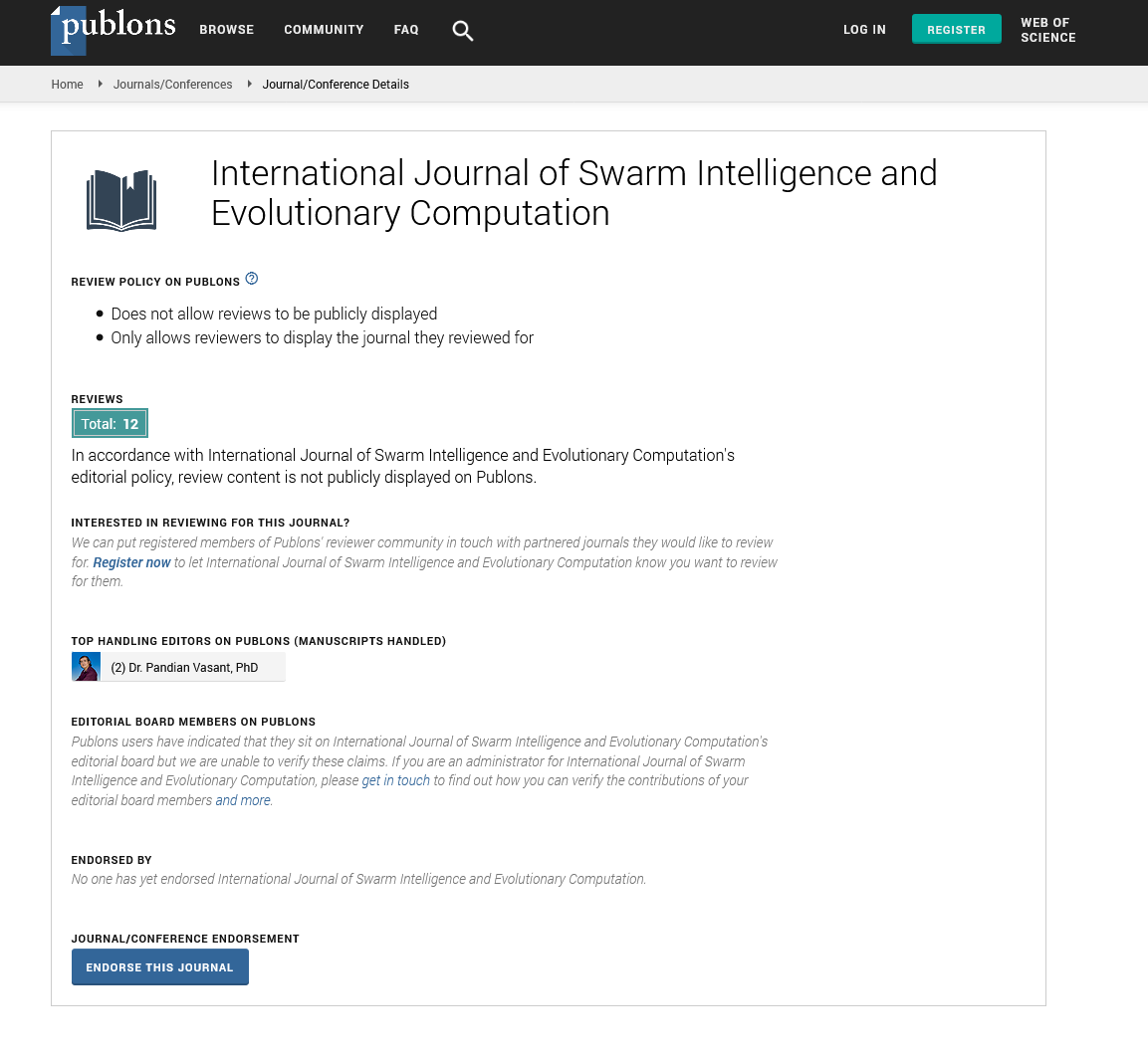Indexed In
- Genamics JournalSeek
- RefSeek
- Hamdard University
- EBSCO A-Z
- OCLC- WorldCat
- Publons
- Euro Pub
- Google Scholar
Useful Links
Share This Page
Journal Flyer

Open Access Journals
- Agri and Aquaculture
- Biochemistry
- Bioinformatics & Systems Biology
- Business & Management
- Chemistry
- Clinical Sciences
- Engineering
- Food & Nutrition
- General Science
- Genetics & Molecular Biology
- Immunology & Microbiology
- Medical Sciences
- Neuroscience & Psychology
- Nursing & Health Care
- Pharmaceutical Sciences
Perspective - (2025) Volume 14, Issue 2
The Biological Inspiration: Swarm Intelligence as a Bridge Between Natural and Artificial Intelligence
Han Soo*Received: 18-Apr-2025, Manuscript No. SIEC-25-28704; Editor assigned: 21-Apr-2025, Pre QC No. SIEC-25-28704 (PQ); Reviewed: 05-May-2025, QC No. SIEC-25-28704; Revised: 12-May-2025, Manuscript No. SIEC-25-28704 (R); Published: 19-May-2025, DOI: 10.35248/2090-4908.24.14.422
Description
Swarm Intelligence serves as a bridge between the study of natural intelligence and the development of Artificial Intelligence. SI algorithms are explicitly inspired by the collective behaviors of social insects, bird flocks, fish schools, and other natural systems. These natural systems have evolved over millions of years to solve complex problems in their respective environments, demonstrating remarkable efficiency, robustness, and adaptability. By studying these natural systems, researchers gain insights into the fundamental principles that underlie collective intelligence, such as decentralized control, local interaction, and self-organization. These principles can then be translated into computational models and algorithms that can be used to solve complex problems in AI. This perspective highlights the close relationship between biology and AI, and the potential for each field to inform and enrich the other.
Swarm Intelligence refers to the collective behavior of decentralized, self-organized systems, natural or artificial. In nature, this is evident in how ant colonies forage, birds flock, or fish school, where individuals follow simple rules and interact locally, resulting in complex group behaviors without centralized control. Key principles of SI include flexibility, robustness, self-organization, and decentralization.
By studying natural swarms, AI researchers can gain a deeper understanding of the mechanisms that enable these systems to achieve complex goals, such as finding food, building nests, and avoiding predators. For example, the foraging behavior of ants, where they collectively explore the environment and discover the shortest path to a food source, has inspired the development of Ant Colony Optimization, a powerful algorithm for solving routing and optimization problems. Similarly, the flocking behavior of birds, where they maintain cohesion and alignment while navigating complex environments, has inspired the development of Particle Swarm Optimization, an algorithm for solving continuous optimization problems. The intricate communication methods used by bees, such as the waggle dance, have also provided inspiration for designing efficient communication protocols for multi-agent systems.
At the same time, AI research can also contribute to our understanding of natural intelligence. By creating computational models of swarm behavior, researchers can test hypotheses about how these systems work and gain new insights into the principles of collective intelligence in nature. For instance, by simulating the behavior of a swarm of ants, researchers can study the effects of different pheromone deposition and evaporation rates on the colony's ability to find the shortest path. This can lead to a better understanding of the factors that influence the efficiency and robustness of ant colony foraging.
In conclusion, Swarm Intelligence, viewed from the perspective of biological inspiration, provides a valuable framework for connecting the study of natural intelligence with the development of Artificial Intelligence. By drawing inspiration from the collective behaviors of natural systems, AI researchers can design more effective and efficient algorithms, while also contributing to our understanding of the fundamental principles of intelligence in both natural and artificial systems. This cross-pollination of ideas between biology and AI has the potential to lead to significant breakthroughs in both fields.
Swarm Intelligence exemplifies how insights from natural systems can inform and enhance artificial intelligence. By emulating the decentralized, self-organizing behaviors observed in nature, AI systems can become more robust, adaptable, and efficient. As research progresses, the integration of SI principles promises to advance AI capabilities, bridging the gap between natural intelligence and artificial systems.
Citation: Soo H (2025). The Biological Inspiration: Swarm Intelligence as a Bridge Between Natural and Artificial Intelligence. Int J Swarm Evol Comput. 14:421.
Copyright: © 2025 Soo H. This is an open-access article distributed under the terms of the Creative Commons Attribution License, which permits unrestricted use, distribution and reproduction in any medium, provided the original author and source are credited.


